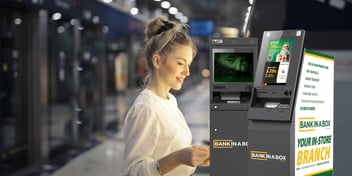14.5 Million Americans Can’t Reliably Access Mobile Banking, Need Convenient ATMs
When the experts start pronouncing mobile applications as the future of banking, the institutions listen. In their quest to capture the up-and-coming consumer, many banks are quick to abandon physical options and turn their focus completely digital. And the growing popularity of digital-only institutions continues to spur them on.
Just one small problem. The US communications infrastructure can’t support 100% digital banking.
Oddly enough, the answer just might be conveniently located ATMs.
Why is mobile banking access so difficult?
 Around 14.5 million Americans don’t have reliable or working access to mobile, according to a 2021 Federal Communications Commission (FCC) report. Even if these consumers own a cell phone, they can’t make calls, receive texts, or use mobile data in or around their homes. But that just means they have to use their home internet instead.
Around 14.5 million Americans don’t have reliable or working access to mobile, according to a 2021 Federal Communications Commission (FCC) report. Even if these consumers own a cell phone, they can’t make calls, receive texts, or use mobile data in or around their homes. But that just means they have to use their home internet instead.
Except they probably don’t have internet either.
In addition to limited or non-existent mobile connectivity, approximately 4.4% of the US population doesn’t have access to high-speed broadband service. Internet, when and where they have it, is either through a data-capped satellite provider or antiquated DSL services offering 1.5-10 Mbps.
Any broadband internet is light years faster than the old dial-up connections. Unfortunately, as common internet speeds have grown, so has the amount of data required to operate the services and systems consumers usually access.
On average, mobile phone users eat up 6.8-8.9 gigabytes of wi-fi data every month. And that internet usage isn’t all videos, Facebook, SnapChat, and TikTok. Between updates, account management, and bill pay, mobile banking applications can easily account for at least 1 GB of that data every 30 days.
So, as branches close and digital banking takes over the financial landscape, where are over 14 million disenfranchised Americans supposed to turn? The answer may just lie in their local gas station or corner store.
Consumers bank...at the convenience store?
Americans turn to ATMs as a convenient resource for cash and basic banking, so it’s hardly a surprise to discover ATM access is a main consideration when consumers select their bank. In a recent report from Mercator Advisory, over half of those surveyed (65%) want ATM locations near their home. Another 59% wanted access to ATMs without long lines.
Consumers with limited access to branches and mobile banking are even more reliant on local ATMs to perform basic account management like balance inquiries, transferring money, and accessing cash. Even the 27% of Americans who use digital-only banks lean heavily on ATM access when it comes to physical currency.
With so many people in urban and rural areas struggling to connect with digital and online banking technology, providing reliable, local, and surcharge-free banking can still be a surprising draw for the surrounding community. Completely surcharge-free machines often draw 3-4 times the foot traffic of surcharged ATMs.
Leveraging the need for retail ATMs
Retailers that already have on-site ATMs can help their community by working to partner with nearby banks and surcharge-free networks to promote their locations and offer free or reduced-rate transactions on their machines. Similarly, retail establishments with multiple locations can help promote their stores as safe, reliable locations for basic banking services.
Even better, today’s truly modern ATMs can offer options that generate a bigger draw for retail customers – especially those that struggle with banking access. Services such as multi-denomination withdrawals, cash deposits, and bill pay are just a few options that help retailers serve their community while improving transaction volumes.
So, while banks continue to focus digitally, convenience retailers can leverage the latest in ATM technology to build trust, foot traffic, and service for their customers. And maybe make a little more money while they’re at it.




